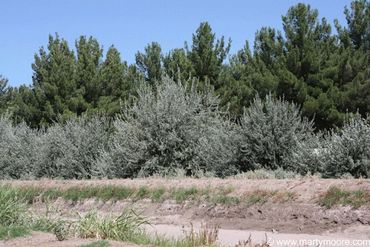Russian Olive






Details and Information
Common Names
Russian olive
Description
Russian olive is a thorny shrub or small tree growing up to 35 feet tall. This tree is easily recognized by the silvery, scaly underside of the leaves and the slightly thorny stems. Leaves are alternate and ½ inch wide. Small, yellowish flowers or hard green to yellow fruits are abundant and occur on clusters near the stems in the spring and in the summer. Russian olive can form a dense shrub layer which displaces native species and closes open areas.
Key Features
Russian olive trees are a hardy deciduous shrub or small tree. The spreading branches form into a dense rounded crown. It has thick bark that comes off in narrow, elongated, fibrous strips. They also have dry, olive-like hard seeds that will remain viable in the soil for up to 3 years.
Habitat
Russian olive will invade old fields, woodland edges, river banks and other disturbed areas.
Control
There are herbicides and other control methods that commonly control Russian olive. Often dormant applications using cut-stump treatments are more effective. Foliar treatments are difficult due to the size of trees, and are often done on regrowth of cut trees.For more information on these herbicides and other control methods contact the Weed and Pest office.
Other Facts
Russian olive trees were mainly planted for wildlife habitat, mine reclamation and shelterbelts. In Crook County it is up to the landowner if they want to remove Russian olive. Many people use the wood for making furniture and other items.
Cookie Policy
This website uses cookies. By continuing to use this site, you accept our use of cookies.